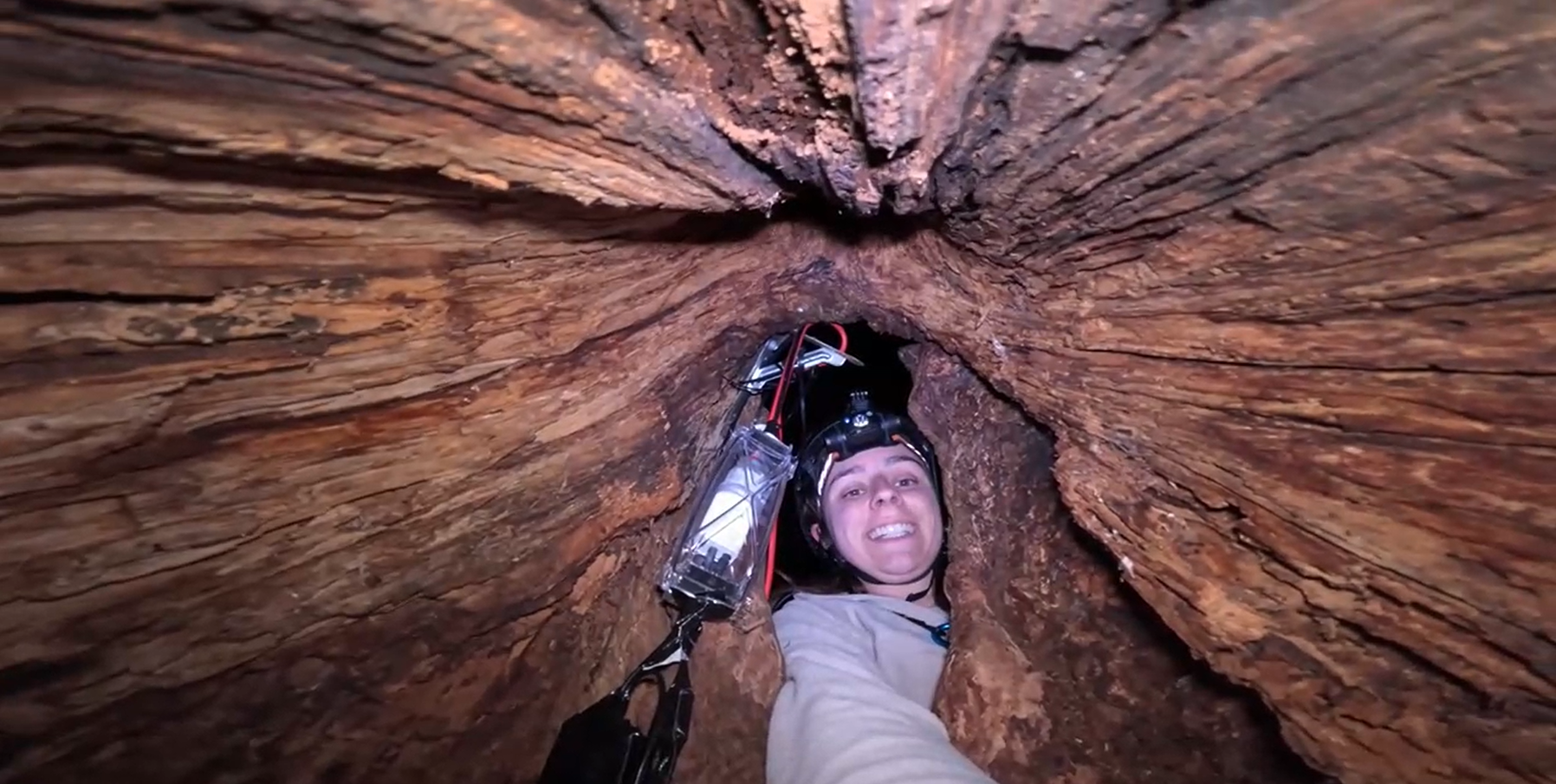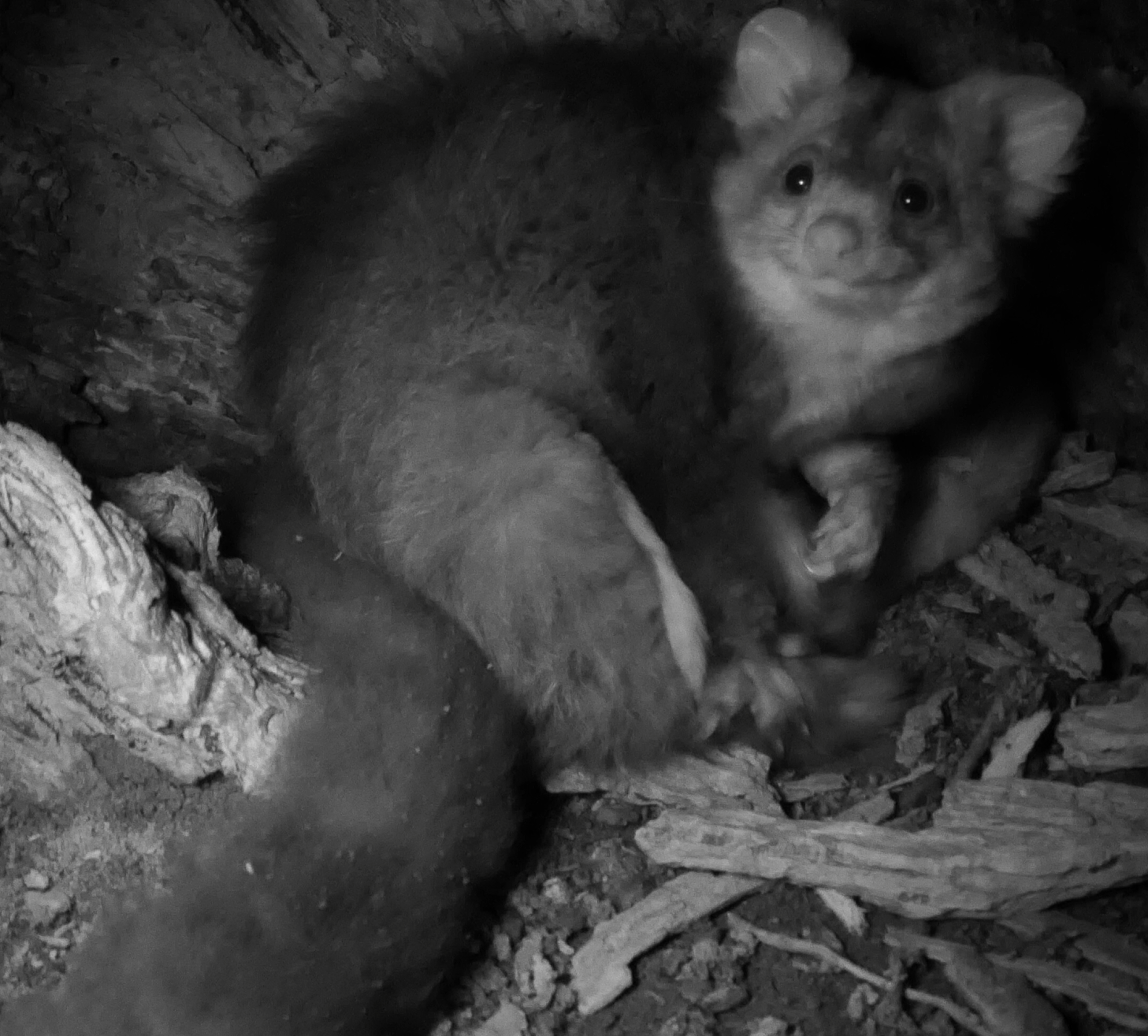When Dr Ana Gracanin of the Australian National University placed an infrared camera inside a large tree hollow used by greater gliders as a nest, she didn’t expect to see the glider father delivering food to the young. Even more surprising was the way he did it, with tasty stems wrapped in the doting father’s tail.
Australia has such a rich supply of eccentric and adorable animals that some get overlooked. The greater glider is one such example, its relative obscurity enhanced by the fact that it mostly lives high in the forest canopy, where they are hard to observe. Many people think they are just a larger relative of the better-known sugar glider.
That’s a pity because, besides being adorable, Gracanin told IFLScience that the gliders are an excellent flagship species for conservation, dependent on healthy ecosystems that also support many other species. By contrast, the more common representative of Australia’s forests, koalas, can survive in relatively young forests recovering from disaster.
Gracanin told IFLScience that most of what we know about greater gliders is based on people peering up 15-40 meters (49-131 feet) at the arboreal marsupials using hand-held torches. Their private lives were unknown until Gracanin created a livestream for the world to enjoy and scientists to study.
The technology for this system is relatively new, but Gracanin said this wasn’t the only reason her work is the first. “We needed to find a hollow large enough that we could fit a camera inside without disturbing [the gliders],” she said. “And we needed continuous power and Internet.”
After trying more than a hundred examples, Gracanin found an exceptional hollow near Tallangada, New South Wales, with nearby locations to set up six separate solar panels to maximize sun exposure. She also installed a 5G router, although she told IFLScience the livestream still sometimes drops out when traffic is too heavy on a nearby road with tourists using their phones.

Baby Brimi seen behind mother Pip.
Image credit: Ana Gracanin
Gracanin has yet to publish her observations, telling IFLScience, “I need to go through 5,000 hours of livestream first.” Nevertheless, even the parts she has watched have proven significant.
The hollow is occupied by a male, Milo, a female, Pip, and a baby named Brimi by a vote of avid livestream viewers. Even this is somewhat unusual, Gracanin told IFLScience, with many hollows occupied only by one or two gliders. This had led to them being thought of as a solitary species, but may just reflect a shortage of family-sized accommodation exceeding even that in Australia’s cities.
Greater glider fathers were suspected of being deadbeat dads, since there are observations of the young riding on the mother’s back but not the father’s after leaving the pouch, and following mothers around. However, this may be a consequence of the limited opportunities for observation provided by their lifestyle.
However, Gracanin said in an emailed statement, “The camera captured Milo using his tail to grasp eucalyptus stems and carry them into the hollow for Brimi and then Brimi eating the leaves.” Besides restoring male gliders’ reputation, the discovery proved the gliders’ tails are “prehensile”, or able to grasp. The livestream also revealed Pip using her tail in the same way, contradicting previous expectations that gliders’ tails were purely for balance and show.

Milo carrying the leaves into the hollow with his tail.
Image credit: © Ana Gracanin/WWF-Australia
Five years ago, Gracanin’s former supervisor revealed that greater gliders are three species, not one. The camera captured the southern glider (Petauroides volans), so it is unknown if the more northerly species show the same behavior.
The work has already emphasized how vulnerable greater gliders are to habitat loss. Like many species, they depend on tree hollows for nesting, which only form in relatively old trees. If paternal care is a big part of giving young gliders the best start in life, then larger hollows, available in only the oldest trees, become particularly essential so the whole family can be together.
“There’s now a chainsaw technique to carve holes in trees,” Gracanin told IFLScience, “but trees need to be big to make a hollow this large without affecting the tree’s structural integrity. We need intermediate-sized trees to reach the size of old ones so they can replace them; we can’t have gaps in the cycle. [Greater gliders] are a short-lived species that can’t wait decades for hollows to return.”

Dr Ana Gracanin taking a selfie having found the right hollow.
Image credit: Ana Gracanin
Gracanin told IFLScience many areas had also suffered 80 percent declines in local populations following the 2019-20 fires. Gliders are also sensitive to heat, and therefore threatened by climate change.
Those worried about the gliders’ fate can support campaigns to end logging of greater glider habitat, which has been a hot political issue recently. Gracanin also said volunteers could assist by reviewing the camera footage, saving her going through some of those 5,000 hours, if watching adorable animals for science from the comfort of your armchair sounds like your thing.

Pip the glider mother. Are you really going to let a face that cute go extinct?
Image credit: Ana Gracanin
Naturally, Gracanin’s work is not restricted to this one livestream. She has also done a study on how the greater glider glides, noting it has a differently attached membrane to its distant relative, the sugar glider. Although that work is also yet to be published, Gracanin told IFLScience that it seems that when it comes to gliding, this species is not greater, having a significantly shorter glide path than many counterparts. Fun as that work was, it’s also serious, helping conservationists identify how large gaps can be between trees before they threaten glider habitat.
Source Link: World-First Livestream Reveals Secret Lives Of Greater Gliders, Including Never-Before-Seen Behaviors